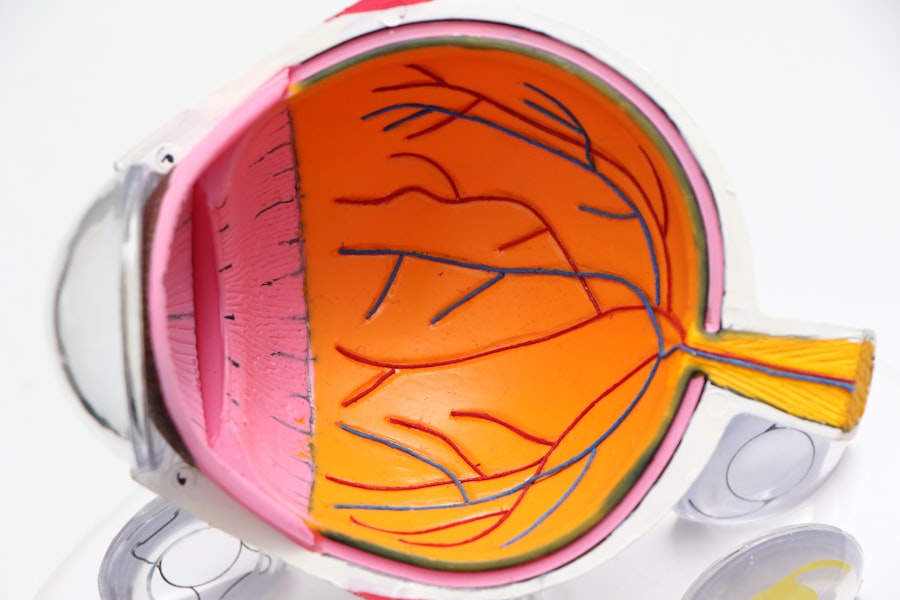
The Evolution of Internet: Advancing Technology
The origins of the Internet can be traced back to the late 1960s with the development of ARPANET, a project funded by the United States Department of Defense. Initially designed to facilitate communication between various research institutions, ARPANET utilized packet-switching technology, which allowed data to be broken into smaller packets and sent across a network of computers. This innovative approach was revolutionary, as it enabled multiple users to share a single communication line, significantly improving efficiency.
The first successful message sent over ARPANET occurred in 1969 when a computer at UCLA communicated with another at Stanford Research Institute. This moment marked the inception of a network that would eventually evolve into the global Internet we know today. As ARPANET expanded, it laid the groundwork for the development of protocols that would govern data transmission.
In 1973, Vint Cerf and Bob Kahn introduced the Transmission Control Protocol (TCP) and Internet Protocol (IP), collectively known as TCP/IP. This set of protocols became the standard for ARPANET and later for the entire Internet, allowing diverse networks to interconnect seamlessly. By the early 1980s, ARPANET transitioned to TCP/IP, and the term “Internet” began to emerge as a descriptor for this interconnected network of networks.
The introduction of the World Wide Web in 1991 by Tim Berners-Lee further revolutionized access to information, allowing users to navigate through hyperlinked documents using web browsers. This marked a significant shift from a primarily academic and military tool to a platform accessible to the general public.
Key Takeaways
- The birth of the internet can be traced back to ARPANET, which eventually evolved into the World Wide Web, revolutionizing communication and information sharing.
- The rise of broadband brought high-speed internet to the masses, enabling faster and more reliable connectivity for homes and businesses.
- Mobile internet has shifted the way we connect, allowing for on-the-go access to information and services through smartphones and other portable devices.
- The internet of things has connected devices and appliances, creating a network of smart technology that can communicate and interact with each other.
- Cloud computing has transformed the way we store and access data, providing convenient and scalable online solutions for businesses and individuals.
The Rise of Broadband: High-Speed Internet for the Masses
Enhanced User Experience
The advent of broadband technologies such as Digital Subscriber Line (DSL) and cable Internet provided users with significantly faster connection speeds, enabling seamless streaming, gaming, and browsing experiences. This shift not only enhanced user satisfaction but also facilitated the growth of online services and content that required higher bandwidth.
Driving Factors and Expanded Online Activities
Broadband’s widespread adoption was driven by several factors, including increased competition among Internet Service Providers (ISPs) and advancements in infrastructure. As more households gained access to high-speed Internet, online activities expanded beyond simple email and web browsing to include video conferencing, online gaming, and streaming services like Netflix and YouTube.
The Rise of E-commerce and a New Era of Interaction
The proliferation of broadband also played a crucial role in the rise of e-commerce, as businesses began to leverage the Internet for marketing and sales. By 2010, broadband had become the dominant form of Internet access in many countries, fundamentally altering how people interacted with technology and each other.
Mobile Internet: The Shift to On-the-Go Connectivity

The advent of mobile Internet marked a significant turning point in how individuals accessed information and communicated with one another. With the introduction of smartphones in the late 2000s, users gained unprecedented access to the Internet from virtually anywhere. The integration of mobile broadband technologies such as 3G and later 4G LTE allowed for fast data transmission on mobile devices, enabling users to browse websites, stream videos, and engage with social media platforms while on the move.
This shift not only changed user behavior but also transformed entire industries, as businesses adapted their strategies to cater to an increasingly mobile audience. Mobile applications became a cornerstone of this new era, providing users with tailored experiences that leveraged location data and real-time information. Services like Uber revolutionized transportation by connecting riders with drivers through a simple app interface, while platforms like Instagram changed how people shared their lives through photos and videos.
The rise of mobile Internet also led to significant changes in advertising strategies, as companies began targeting consumers based on their location and online behavior. As mobile connectivity continued to evolve with the introduction of 5G technology, which promises even faster speeds and lower latency, the potential for innovation in mobile applications and services remains vast.
The Internet of Things: Connecting Devices and Appliances
| Category | Metrics |
|---|---|
| Number of Connected Devices | 20.4 billion devices by 2020 (Gartner) |
| Market Size | 212 billion by 2019 (IDC) |
| IoT Spending | 1.1 trillion by 2023 (IDC) |
| IoT in Smart Homes | 63 million US households will be smart by 2022 (Statista) |
The concept of the Internet of Things (IoT) emerged as a natural progression from the increasing connectivity of devices. IoT refers to the network of physical objects embedded with sensors, software, and other technologies that enable them to connect and exchange data over the Internet. This interconnectedness allows for greater automation and efficiency across various sectors, including healthcare, agriculture, transportation, and smart homes.
For instance, smart thermostats can learn user preferences and adjust heating or cooling accordingly, leading to energy savings and enhanced comfort. In industrial settings, IoT devices are used for predictive maintenance, where sensors monitor equipment performance in real-time to anticipate failures before they occur. This capability not only reduces downtime but also extends the lifespan of machinery.
Additionally, IoT has significant implications for urban planning through smart city initiatives that utilize connected devices to manage traffic flow, monitor air quality, and optimize energy consumption. As more devices become interconnected, concerns regarding data privacy and security have emerged, prompting discussions about regulations and best practices to safeguard user information.
Cloud Computing: Storing and Accessing Data Online
Cloud computing has revolutionized how individuals and organizations store and access data by providing scalable resources over the Internet. Instead of relying on local servers or personal devices for storage, users can leverage cloud services offered by providers like Amazon Web Services (AWS), Microsoft Azure, and Google Cloud Platform. This shift has enabled businesses to reduce infrastructure costs while gaining access to powerful computing resources that can be scaled up or down based on demand.
The benefits of cloud computing extend beyond cost savings; they also enhance collaboration and accessibility. Teams can work together in real-time on shared documents stored in the cloud, regardless of their physical location. This capability has become increasingly important in today’s remote work environment, where employees need seamless access to files and applications from various devices.
Furthermore, cloud computing supports advanced analytics and machine learning applications by providing vast amounts of data storage and processing power that would be impractical for most organizations to maintain on-premises.
Artificial Intelligence and Machine Learning: Enhancing Internet Capabilities

Enhancing User Experiences
AI algorithms analyze vast amounts of data to identify patterns and make predictions, enabling applications such as personalized recommendations on streaming platforms and advanced fraud detection systems in financial services. Machine learning models continuously improve their accuracy over time as they are exposed to more data, making them increasingly effective at solving complex problems.
Transforming Customer Service
In addition to improving user experiences through personalization, AI is also being integrated into customer service through chatbots that provide instant support on websites and social media platforms. These AI-driven systems can handle a wide range of inquiries without human intervention, freeing up resources for more complex issues that require human expertise.
Strengthening Cybersecurity
Moreover, AI plays a crucial role in cybersecurity by identifying potential threats in real-time and responding proactively to mitigate risks.
A Future of Endless Possibilities
As AI technology continues to evolve, its integration into Internet applications will likely expand further, driving innovation across multiple sectors.
Virtual and Augmented Reality: Immersive Internet Experiences
Virtual reality (VR) and augmented reality (AR) represent cutting-edge technologies that are reshaping how users interact with digital content. VR immerses users in entirely virtual environments through headsets that block out the physical world, allowing for experiences ranging from gaming to virtual tourism. For instance, platforms like Oculus Rift provide users with immersive gaming experiences that transport them into fantastical worlds where they can interact with characters and environments in ways previously unimaginable.
On the other hand, augmented reality overlays digital information onto the real world through devices like smartphones or AR glasses. Applications such as Pokémon GO have demonstrated AR’s potential for engaging users by blending digital elements with their physical surroundings. Businesses are also leveraging AR for practical applications; for example, furniture retailers allow customers to visualize how a piece of furniture would look in their home before making a purchase decision.
As both VR and AR technologies continue to advance, they promise to create even more immersive experiences that blur the lines between digital content and reality.
The Future of Internet: 5G, Quantum Computing, and Beyond
Looking ahead, the future of the Internet is poised for remarkable advancements driven by technologies such as 5G connectivity and quantum computing. The rollout of 5G networks promises significantly faster data transfer speeds, lower latency, and increased capacity for connected devices. This leap in connectivity will enable new applications such as real-time remote surgery in healthcare or enhanced autonomous vehicle communication systems that require instantaneous data exchange between vehicles.
Quantum computing represents another frontier that could revolutionize how we process information on the Internet. Unlike classical computers that use bits as the smallest unit of data (0s or 1s), quantum computers utilize qubits that can exist in multiple states simultaneously due to quantum superposition.
As these technologies converge with existing Internet infrastructure, they will likely give rise to new applications we cannot yet fully envision. The ongoing evolution of the Internet will continue to shape our lives in profound ways—transforming industries, enhancing communication methods, and redefining our relationship with technology itself.
FAQs
What are some key advancements in internet technology?
Some key advancements in internet technology include the development of high-speed broadband, the introduction of wireless internet (Wi-Fi), the rise of cloud computing, and the expansion of the Internet of Things (IoT).
How has internet technology improved communication?
Internet technology has improved communication by enabling real-time messaging and video calls, facilitating collaboration through cloud-based platforms, and providing access to a wide range of communication tools and social media platforms.
What impact has internet technology had on business?
Internet technology has had a significant impact on business by enabling e-commerce, online marketing, remote work capabilities, and access to global markets. It has also transformed customer service and data management.
What are some concerns related to internet advancement?
Some concerns related to internet advancement include cybersecurity threats, privacy issues, digital divide (unequal access to internet technology), and the potential for job displacement due to automation and artificial intelligence.
How has internet technology changed entertainment and media consumption?
Internet technology has changed entertainment and media consumption by enabling streaming services, online gaming, digital content creation, and personalized content recommendations. It has also transformed the distribution and monetization of media.



